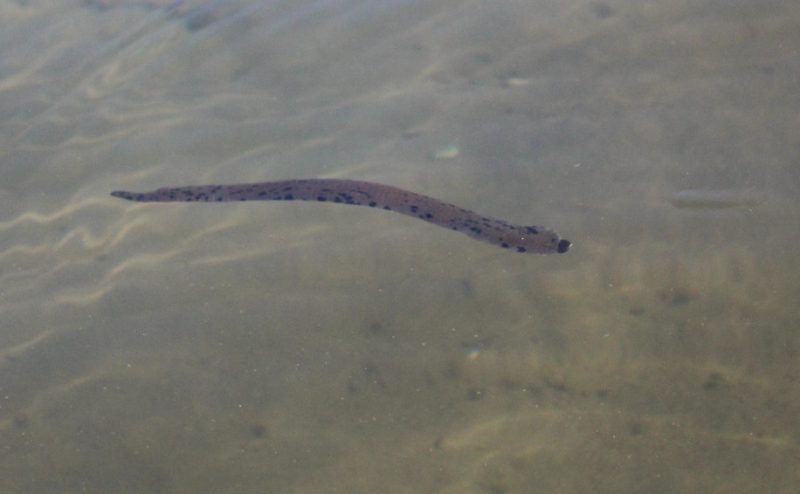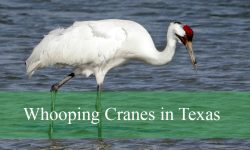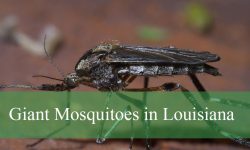Minnesota is known as the Land of 10,000 Lakes, a region filled with clear waters, fishing traditions, and wildlife that thrives in freshwater environments. Hidden beneath these lakes, however, is a creature often misunderstood and sometimes feared. These are the leeches that quietly inhabit shallow waters, weedy shorelines, and muddy lake bottoms across the state.
Most people associate leeches with bloodsucking behavior. Yet the reality is far more complex. Many leech species do not feed on humans at all. They play essential roles in lake ecosystems, influence biodiversity, and reflect the ecological health of Minnesota’s waters in ways most people have never heard.
This article explores shocking truths about leeches in Minnesota lakes. Their biology, feeding habits, hidden behaviors, and ecological importance reveal a story that is far more fascinating than the myths that surround them.
Understanding Leeches in Minnesota

What Leeches Really Are
Leeches belong to the class Hirudinea within the phylum Annelida, making them relatives of earthworms. Their bodies are segmented but flattened, allowing them to move easily through water or along submerged surfaces. Most leeches have two suckers, one at each end, which help them attach to hosts or surfaces.
Their bodies contain powerful muscles and sensory organs that allow them to detect movement, temperature changes, and chemical signals. These adaptations help them find food, avoid predators, and survive in dynamic lake environments.
Species Found in Minnesota
Minnesota hosts more than twenty species of leeches. Only a few are blood feeders. Most are predators that feed on small invertebrates such as snails, insect larvae, and worms.
Common species in Minnesota lakes include the freshwater medical leech, the ribbon leech, the horse leech, and the northern leech. Their colors range from dark brown and black to mottled green and gold.
Their Preferred Lake Habitats
Leeches gather in shallow waters, especially in areas with muddy bottoms and aquatic vegetation. Such environments provide shelter, protection from predators, and abundant prey.
They also thrive in warm water conditions. During summer, Minnesota lakes reach temperatures that allow leech populations to become more active and more visible to swimmers and anglers.
The Hidden Role Leeches Play in Minnesota’s Lake Ecosystems
Natural Predators That Keep Food Webs Balanced
Many leeches are active predators. They consume insect larvae, small crustaceans, and soft-bodied organisms that live near lake bottoms. Their hunting helps maintain balance among invertebrate populations.
By controlling certain prey species, leeches indirectly support fish populations, amphibians, and waterbirds that rely on healthy invertebrate communities.
Indicators of Water Quality
The presence or absence of certain leech species can reveal important information about water quality. Some species tolerate pollution. Others require clean, oxygen-rich water.
Biologists use leeches as part of lake monitoring programs because their sensitivity to environmental conditions provides valuable insights.
Food Source for Larger Animals
Leeches are prey for fish, turtles, amphibians, and some birds. Northern pike, sunfish, perch, and bass all consume leeches. Because they store nutrients from the prey they eat, leeches become energy-rich food items for predators.
This places them as important links in Minnesota’s aquatic food webs.
Shocking Facts About Leech Feeding Behavior
Not All Leeches Suck Blood
Only a portion of Minnesota’s leech species feed on blood. Most rely on predatory feeding. They use their muscular bodies and sensitive sensory organs to locate prey. Once they capture it, they swallow it whole or use enzymes to dissolve tissues.
Predatory leeches help keep nuisance insect populations in check.
Blood Feeding Leeches Are Highly Specialized
Blood feeding leeches possess sharp mouthparts arranged in triangular or Y-shaped cutting structures. They release anticoagulants that prevent blood from clotting. They also release mild anesthetics that reduce sensations on the host.
This combination makes their bite almost undetectable until after feeding is complete.
How Long They Feed
A blood feeding leech may remain attached for minutes or up to an hour depending on the species. Once full, it detaches naturally and will not feed again for weeks or months.
This episodic feeding makes them less harmful than commonly believed.
Why Swimmers in Minnesota Sometimes Encounter Leeches
Warm Water Seasons
During summer months, water temperatures rise. Leeches become more active and move closer to shore. Shallow areas warm faster, attracting leeches searching for prey.
Swimmers in quiet coves, marshy edges, or weed-filled shallows are more likely to encounter them.
Attraction to Movement
Leeches sense vibrations in the water. The splashing and motion of swimmers can draw them from hiding. This response is not aggression but a natural instinct to seek potential food sources.
Low Oxygen Conditions
Leeches often move to the surface or shoreline when oxygen levels are low, such as during late summer when algae growth increases. These conditions make them more visible along lake edges.
Leech Anatomy You Never Noticed
Suckers With Precision Grip
The front sucker allows leeches to explore surfaces. The rear sucker anchors them with impressive strength. Together these suckers enable them to climb rocks, latch onto hosts, and move across uneven surfaces.
Segmented Hydraulics
Leech bodies contain a hydraulic system similar to worms. This system allows them to contract, stretch, and perform inchworm-like movements. Their fluid-based locomotion gives them remarkable flexibility.
A Digestive System Designed for Efficiency
Their digestive systems expand dramatically when feeding. Blood feeders can consume several times their body weight in a single meal. Enzymes within their gut preserve the blood, allowing slow digestion that may last months.
The Surprising Benefits of Leeches in Minnesota Lakes
Cleaning Excess Organic Matter
Leeches feed on detritus, small organisms, and decaying materials. This keeps lake bottoms from accumulating excessive organic buildup. Clean sediment promotes better water quality and supports healthy fish spawning grounds.
Influencing Fish Behavior
Some fish species learn to hunt in areas where leeches gather. Their presence creates microhabitats that help juvenile fish train hunting skills.
Supporting Migratory Birds
Shorebirds and wading birds consume leeches during migration. This provides essential fuel for long distance travel.
Myths About Leeches in Minnesota Lakes
Myth: Leeches Are Dangerous
Leech bites rarely cause harm. They do not transmit diseases in Minnesota. The minor bleeding that occurs after detachment is caused by natural anticoagulants.
Simple cleaning is usually sufficient.
Myth: Salt Must Be Used to Remove Leeches
Pulling a leech off directly is safe. Salt, fire, or chemicals cause the leech to regurgitate its gut contents which increases infection risk.
The safest method is gentle removal.
Myth: Leeches Swarm Humans
Leeches do not swarm people. They respond to movement. Encounters are typically isolated and brief.
Leech Life Cycle in Minnesota Waters
Egg Stage
Female leeches produce cocoons that contain eggs. These cocoons remain attached to submerged structures or buried in sediment. They hatch into small juvenile leeches that resemble miniature adults.
Growth and Development
Juveniles feed immediately on small invertebrates. Their growth rate depends on temperature, food availability, and genetic traits.
Some species take years to reach full size.
Lifespan
Many Minnesota leech species live two to five years. Their long lifespan allows them to play consistent roles in lake ecosystems.
How Leeches Survive Minnesota Winters
Burrowing Behavior
As temperatures drop, leeches burrow deeper into mud where water remains unfrozen. The mud provides insulation and retains heat.
Slowed Metabolism
They enter a state similar to dormancy. Their metabolic rate decreases, reducing their need for food and oxygen.
Surviving Under Ice
Minnesota lakes freeze for months. Leeches survive beneath the ice layer by finding oxygen rich microhabitats. They move less during this period but remain alive until spring thaw.
Leech Activity and Minnesota’s Fishing Culture
Bait for Popular Game Fish
Leeches are prized as bait for walleye, northern pike, and bass. Their natural movement attracts fish. Anglers often purchase live leeches during peak fishing months.
Why Fish Love Them
Leeches resemble many of the invertebrates fish consume naturally. Their soft bodies and swimming style mimic prey fish instinctively pursue.
Leech Harvesting
Leech trapping is a small but active industry in Minnesota. Harvesters collect leeches from lakes using baited traps. Sustainable harvesting ensures that populations remain healthy.
Unexpected Scientific Discoveries
Medical Value
Some Minnesota species produce anticoagulant compounds similar to those used in medical settings. These compounds inspire research into new blood thinners.
Environmental Sensitivity
Leeches respond quickly to pollutants. Their behavior and abundance help scientists detect changes in water quality long before other organisms show symptoms.
Bioindicators of Climate Change
Warming lakes influence leech reproduction and distribution. These changes offer clues about long term shifts in freshwater ecosystems.
How to Avoid Leech Encounters When Swimming
Choose Sandy Beaches
Public beaches with sandy bottoms and fewer plants harbor fewer leeches. Leeches prefer muddy, vegetated areas.
Keep Moving
Although leeches detect movement, they attach more easily to stationary swimmers. Constant movement reduces contact.
Wear Water Shoes
Shoes create a barrier that prevents leeches from attaching to feet and ankles.
Avoid Shallow Weedy Areas
Dense vegetation creates perfect hiding spots for leeches. Swimming in deeper open water reduces encounters.
Environmental Threats to Minnesota’s Leeches
Pollution
Chemical runoff, pesticides, and excess nutrients degrade lake habitats. Polluted sediments reduce leech survival and disrupt reproduction.
Habitat Destruction
Shoreline development, dredging, and invasive plant removal alter habitats where leeches feed and reproduce.
Invasive Species
Invasive fish and invertebrates compete with leeches for food or prey upon them. These shifts influence leech populations significantly.
Daily Behaviors You Never Knew About
Nocturnal Activity
Leeches are most active at night. They hunt, explore, and feed during darker hours. This helps them avoid predators.
Swimming Movements
Many leeches swim gracefully using undulating motions. Their swimming ability helps them escape danger or move toward prey.
Sensory Tracking
Leeches detect chemical trails left by prey. Their sensory cells help them locate hidden organisms in murky or dark waters.
FAQs About Leeches in Minnesota Lakes
Are leeches harmful
No. Most leeches are harmless and do not bite humans.
Why do leeches bite
Blood feeding species bite to obtain nutrients but attacks are rare.
How do I remove a leech
Gently use your fingernail to slide it off. Avoid chemicals or burning.
Where are leeches most common
Shallow warm areas with vegetation and mud.
Are leech bites dangerous
They may bleed slightly but are rarely harmful.
Do leeches live all year
Yes. They survive winter by burrowing into mud.
Why are there so many leeches in Minnesota
The state’s lakes create perfect habitats for feeding and reproduction.
What eats leeches
Fish, turtles, frogs, and many birds.
Do all leeches suck blood
No. Most species in Minnesota are predators.
How long can leeches live
Many live several years under stable conditions.
Conclusion
Leeches in Minnesota lakes are far more complex and important than their reputation suggests. Their presence indicates healthy ecosystems. Their feeding habits regulate populations of aquatic invertebrates. Their role in food webs supports fish, amphibians, and waterbirds. Even their occasional interactions with swimmers reveal fascinating adaptations.
Understanding the truth about leeches helps transform fear into appreciation. These creatures are silent engineers of lake health, contributing to the balance and productivity of Minnesota’s freshwater environments. By respecting their role and protecting their habitats, we preserve the natural integrity of the lakes that define the state’s identity.






